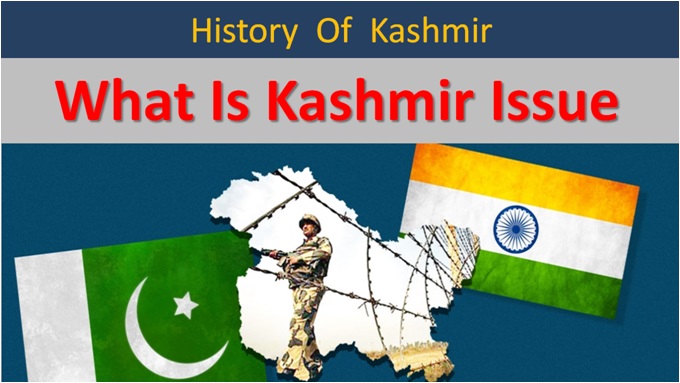Kashmir History | History Of Kashmir | What Is Kashmir Issue
Kashmir history can be traced back to 4000 years BC . Historically, Kashmir has been an integral part of the Indian subcontinent and during prehistoric period , Kashmir has been a Hindu kingdom for many centuries , various Hindu kings ruled over Kashmir.
Kashmir is undoubtedly one of the most beautiful places in the world and even today , the pristine and mesmerizing landscape of Kashmir makes it a true paradise on earth. The beautiful and picturesque landscape of Kashmir is located in the north of India at the peak of India. The Kashmir is situated on the foothills of Himalaya, 566 KM from Indian Capital New Delhi .

Historically, Kashmir is also referred to as Kashmir Valley. Kashmir has been continuously in news , unfortunately for all the wrong reasons. The End of British rule in India led to the partition of India on the religious ground because Muslim leader Muhammad Ali Jinnah demanded a separate country for Muslims. This led to the formation of Pakistan as an independent country in 1947.
After India’s independence in 1947 , India and Pakistan have fought many wars over the control Kashmir . Kashmir issue has been a major conflict area between India Pakistan relations. And therefore, In order to understand the Kashmir problem , we need to look back in the history of Kashmir.
Kashmir history can be studied and analyzed in two periods . The First , pre-independence period , that is prior to 1947 and the second , post-independence period after 1947 .
History Of Kashmir – What Is Kashmir Issue
Kashmir History : Pre-independence Period before 1947
Kashmir – The Hindu Period
The history of Kashmir has been recorded since 3450 BCE and Kashmir has more than 5400 years of historical lineage. The “Nilmata Purana” which was compiled in c. 500–600 CE and Rajatarangini compiled in 1150 CE are considered to be the two most important and authentic sources for the ancient history of Kashmir.
During the prehistoric period, Kashmir has been a Hindu kingdom. As per the ancient extant book on Kashmir “Nilmat Puran” , pre-historic archaeological findings and exploration , the remains of the ancient Hindu temples built by different Hindu rulers are historical testimony present even today.
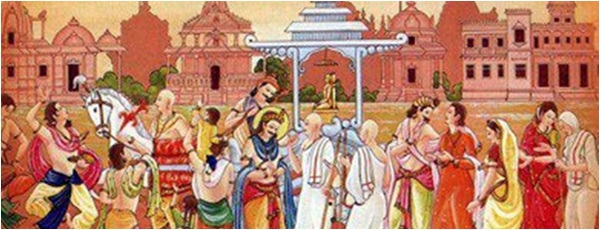
The Hindu epic Mahabharata also mentions Hindu king Kamboja ruled Kashmir during this epic period . In the 14th century BCE , the Hindu king Raja Jambu Lochan founded Jammu .
The history of Kashmir can be traced back to 5400 years BC and during this period , various twenty-one dynasties of Hindus, Buddhists, Jains, have ruled over Kashmir from time to time. ( List of Kashmir Kings since 3450 BCE ) .
The last Hindu ruler of Kashmir was Udyan Dev. After his death , his chief Queen Kota Raniwas became the de facto ruler of Kashmir. Queen Kota Raniwas was a very brave lady and competently ruled over Kashmir.
However , after her death in 1339 the Hindu rule in Kashmir came to an end and this was the beginning of established the Muslim rule in Kashmir under Sultan Shamas-ud-din whose dynasty ruled the Kashmir for over 222 years.
Hindu Period – Mauryan Empire
In Third century BC , during period 296 BC to 232 BC , the Mauryan King Ashoka the grandson of Chandra Gupta made Srinagar the capital of his huge empire.
Hindu Period – Ujjan Empire
The Ujjan empire took control of Kashmir in 530 AD. The Hindu king Lalitya Dityas‘ rule from 724 AD to 761 AD marked an era of literature and learning.
He made Kashmir as his base and Later no he extended his kingdom . He led his armies deep into South India, Turkistan and Tibet. He built temples at Martand , Avantipor and Pandrethan which still remain. He set an example for Kashmir as an independent country.
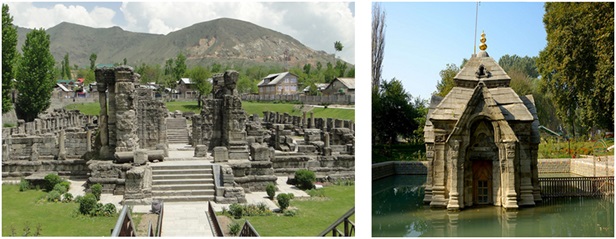
Buddhism In Kashmir
During the first millennium , the Kashmir used to be an important centre of Hinduism . Later on , Buddhism also came to Kashmir . During Emperor Ashok’s rule the Buddhism flourished in Kashmir . During this period , Kashmir became one of the most prominent centers for the spread and development of Buddhism in the adjoining region such as Ladakh .
Buddhism took a firm footing in Kashmir during the rule of King Kanishka. The famous Chinese traveller Hiuen Tsuang also visited Kashmir during this period ( 7th Century A. D. ). The third and the last Buddhist council was organized in Kashmir . Hiuen Tsang was a Chinese Buddhist monk who had visited India during the rule of emperor Harshawardhana .

Islamization Of Kashmir – Mughal Period
The Islamization of Kashmir took place during the 13th and 15the century . The Mughal rule prevailed over Kashmir till 1751 . The Mughal empire was founded by Babar and ruled over India from 1556 to 1707 . During this period various Mughal rulers which include Babar , Humayun , Sher Shah suri , Akbar , Jahangir , Shah Jahan , Aurangzeb
Mughal emperor Shah Jahan’s period witnessed the best of development of arts and culture of the Mughal Empire. Shah Jahan is often referred to as the “architect king Of Mughal Empire”. Shah Jahan is credited with some of the most famous monuments built during Mugul rule over India .
These famous monuments in Delhi include the Red Fort , the Jama Masjid and the most famous, Taj Mahal built in white marble by Shah Jahan for his wife Mumtaz Mahal along the banks of the Yamuna River in Agra near Indian capital Delhi. The Mughal rule declined after the demise of Aurangzeb.
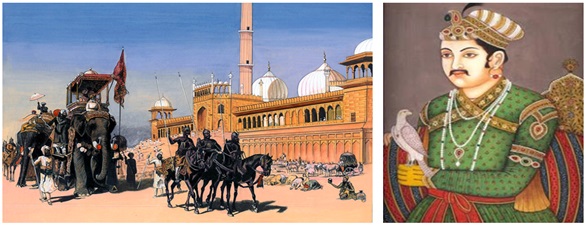
Islamization Of Kashmir – Afghan Invader Ahmed Shah Durani
After Mughal, the Islamization of Kashmir continued during repeated attacks by Afghan invaders . The Mughal empire considerably declined by repeated invasions by Afghan invaders during 1752 AD to 1819 AD .
The first Afghan Rule was Tyrannical Afghan Rule. It was the Afghan Rulers, who saw an opportunity and invaded Kashmir. Afghan ruler Ahmad Shah Abdali ruled over Kashmir in a ruthless manner . Afghans also built Amira Kadal , a historical bridge in Srinagar and Hari Parbat forte a most prominent iconic forte .
The Mughal rule declined after death of Aurangzeb and Maratha expanded their rule towards north India . The most famous third battle of Panipat took place during this period in which Ahmed Shah Abdali defeated Maratha . This was one of the bloodiest battles in the history in which thousands of soldiers died on either side .
After this battle , Maratha rule progress stopped in north India. The Mughul ruler Ahmad Shah Abdali died in Kabul in 1818 . His sons fought wars with Sikh rulers and lost Kashmir to Sikh rulers. This was the end of Muslim rule in Kashmir .
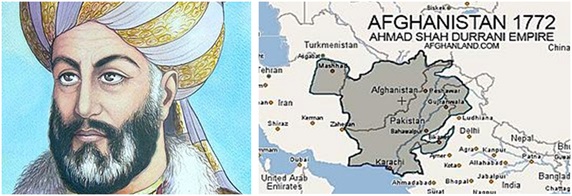
Sikh Empire – Maharaja Ranjit Singh
After the end of Muslim rule in Kashmir , the Leader of Sikh empire Maharaja Ranjit Singh annexed Kashmir in 1846 . Maharaja Ranjit Singh fought several wars against Afghan rule . He became the youngest emperor at the age of 21 years . His rule came to an end with the advent of British rule over India and the East India Company.
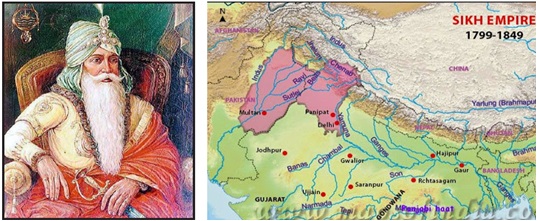
British Rule Over India
The British came to India as merchants and later on became rulers in India . The British East India Company came to India to conduct trade with Mughal in the Indian Ocean Region .
The decline of Muslim and setback to Maratha rule in the north created opportunity of British East India Company to gain footholds in Indian mainland . The British initially conquered few princely states and then rapidly expanded its footprints across India , due to the superior military , modern weapons and infamous “Divide And Rule” policy .
The British ruled over India for over two hundred years . The British rule in India came to an end due to prolonged Indian freedom struggle led by prominent Indian leaders and the formation of NIA – Indian National Army led by Subhash Chandra Bose .
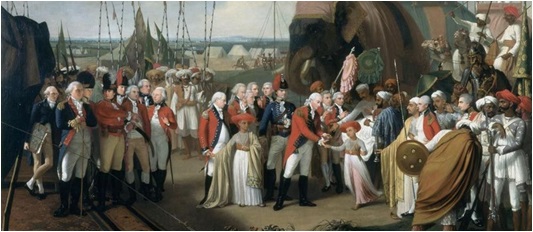
British Rule in Kashmir
The Sikh rule in Kashmir came to an end with the advent of British East India Company . The British East India Company annexed Kashmir after First Anglo-Sikh War . The British later on sold the Kashmir to Raja Gulab Singh of Dogra Dynasty . Afterwards, Maharaja Hari Singh became the last ruler and successor of the Dogra dynasty .
End Of British Rule And Independence Of India
After the end of second world war , the Indian freedom struggle had gained considerable momentum with the formation of “Indian National Army” led by Netaji Subhash Chandra Bose.
By the end of the second world war , The British army had considerably weakened and Britain was not ready for another war on the Indian Soil . And for this reason , Britain decided to exit from India .
And finally , The British rule over India came to end India became independent on 15th August 1947.
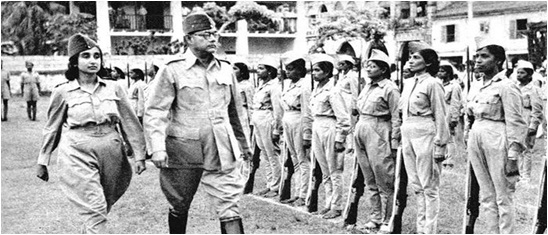
Kashmir History : Post-Independence After 1947
Partition Of India And Formation Of Pakistan
At the end of the British rule over India in the year 1947 , The British decided to partition the pre-independence British Indian subcontinent into two separate countries based on the religion and that led to the formation of Pakistan as an independent country for Muslims.
The large chunk of Muslim population had decided to join the newly created Pakistan and whereas the remaining population , which includes Hindus , Christians , Sikhs and other minority population had joined India .
Prior to the partition of India , the Indian subcontinent used to be a conglomerate of princely states . At the time of partition , the British had left this choice to these princely states to choose the country they wish to join or alternately , remain independent .
And therefore , After the partition , these 562 princely states had the option to join any one of the two newly created independent countries, that is either India OR Pakistan .
The newly reborn India under the leadership of Deputy Prime Minister Sardar Vallabhbhai Patel , who played a crucial role and successfully achieved the challenging task of the reunification of these princely states in joining India .
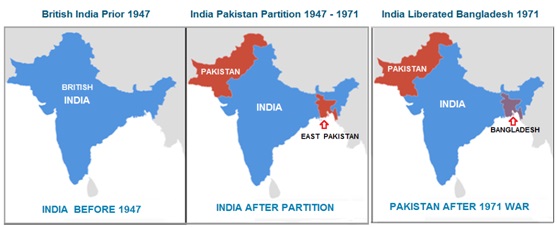
Kashmir Status After Independence in 1947
Kashmir was also an independent princely state prior to independence. After the end of British rule and India’s independence in 1947 , the Hindu ruler of Kashmir, Maharaja Hari Singh initially wanted Kashmir to be independent and neutral. And accordingly, he had conveyed his intent to both India and Pakistan. Maharaja Hari Singh had even sent “Standstill Agreement” to both India and Pakistan in order to remain independent.
The Hindu Maharaja Of Kashmir Hari Singh
Maharaja Hari Singh ( September 23 , 1895 – April 26 , 1961 ) was the Fourth and last ruling Maharaja of the princely state of Jammu and Kashmir in India
Maharaja Hari Singh belongs to Dogra Dynasty Of Jammu. His forefather Maharaja Gulab Singh had integrated the State Of Jammu And Kashmir, which earlier used to be divided in small princely states .
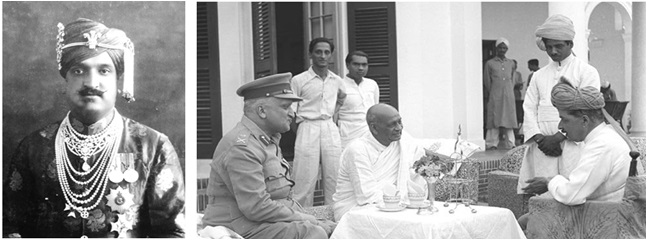
History Of India Pakistan wars
After independence in 1947 onwards , India and Pakistan have fought four wars over Kashmir issue . All these four armed conflicts were started by Pakistan and Pakistan has lost all four wars .
- First War Of Kashmir 1947
- Second India Pakistan War 1965
- Third India Pakistan Bangladesh Liberation War 1971.
- Fourth India Pakistan Kargil War 1999.
First Invasion Of Kashmir By Pakistan 1947
However, his desire to remain independent soon came to an end . The founder of newly formed Pakistan , Muhammad Ali Jinnah wanted Kashmir to be a part of newly created Pakistan , against the wishes of Maharaja Hari Singh and the Kashmiri people .
Pakistan had decided to use the military force to capture Kashmir and sent its armed forces just after the independence in 1947 , disguised as a tribal militia to capture the Kashmir from Maharaja Hari Singh.
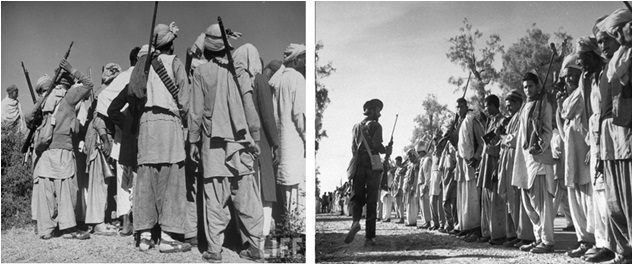
Kashmir Acceded to India
Pakistan had gone back on its word and invaded Kashmir . Maharaja Hari Singh had to flee from Srinagar to shelter in India . Maharaja Hari Singh eventually decided to join India and requested the Indian government for help to face Pakistani invasion . Another mass leader of the local Muslim community in Kashmir , Sheikh Abdulla also later on backed and supported the Maharaja Hari Sings decision to join India .
Now It had become clear that leaders of both Hindu and Muslim leaders had formally agreed to join India . On October 27, 1947 , Maharaja Hari Singh signed the “Instrument of Accession” with India and that was accepted by India’s last Governor-General Lord Mountbatten.
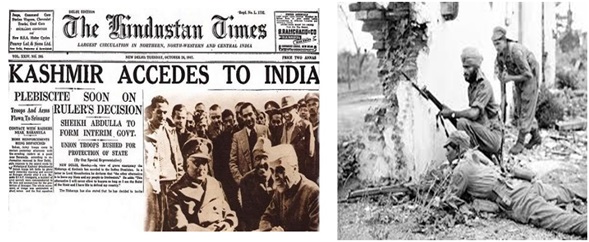
The Pakistani forces along with tribal militia had already made headway right up to Srinagar . These invading forces , on their way to Srinagar had left behind a trail of destruction .
In response to Maharaja Hari Sings request for help , then Indian Prime Minister Jawaharlal Nehru rushed the Indian army to secure Kashmir from Pakistani invasion. The first war between India and Pakistan had just began.
This war is also referred to as the First Kashmir war fought in the year 1947 between India and Pakistan.
The Indian army quickly secured the Shrinagar and taken position outside Shrinagar town to stop the invading Pakistani forces . However, by the time the Indian army is deployed , the Pakistani forces had already captured some part of Kashmir .
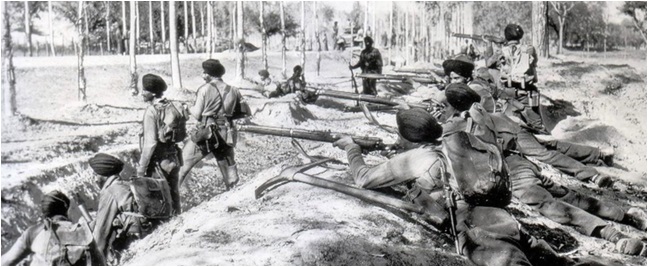
By the end of 1948 , India had deployed a sizable army in Kashmir against Pakistani forces . After a fierce battle , the Indian army was now totally in command to take control of all the rest of the area captured by Pakistan and the Indian army was all set ready to recover every single inch of Kashmiri land .
However , Despite this positional advantage , the Indian government led by Prime Minister Jawaharlal Nehru suddenly requested the United Nations to mediate and eventually a cease-fire agreement was reached between India and Pakistan with the intervention of United Nations .
Despite UN resolution dated 13th August 1948 , Pakistan still continues to occupy the area of Kashmir captured during this invasion and this area under Pakistani control is referred as POK ( Pakistan Occupied Kashmir ) .The remaining area continues to be under Indian control . Since then , The Line Of Control is a de facto boundary that divides the Indian and Pakistani occupied part of the Kashmir.
India had decisively won the first war of Kashmir and Kashmir had been successfully accessed to India. Subsequently , Sheikh Abdullah was appointed head of an emergency administration by an order issued by the Maharaja Hari Singh .
In 1957, Kashmir was formally incorporated into the Indian Union. Since then , Kashmir has been granted a special status under Article 370 of India’s constitution , which ensures special status for Kashmir .
China Captured Aksai Chin Area Of Indian Kashmir in 1962 War
China invaded India on two fronts in 1962 . On the western front , the Chinese forces invaded Aksai Chin part of Kashmir and since then the Aksai Chen area of Kashmir has been captured by China .
After the end of India China war in 1962 , On the Eastern front in NEFA region , the Chinese forces want back to the original line of control position.
But on the Western front , the Aksai Chin area still continues to be under Chinese possession .
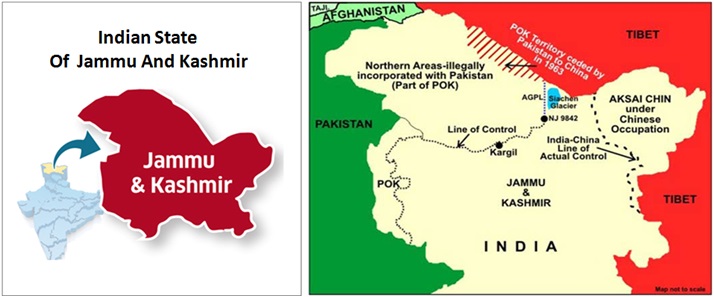
India Pakistan War 1965 Over Kashmir
Inspired by the Chinese success to capture Kashmir , Pakistan again invaded Indian Kashmir in 1965 . Pakistan launched Operation Gibraltar under which Pakistan attempted to infiltrate the Pakistani forces into the Indian state of Jammu and Kashmir to instigate and participate in the insurgency against Indian rule . After fifteen day war , Pakistani forces were defeated and Pakistan lost this war .
India Pakistan War 1971 Over Kashmir
On the 3rd December 1971 , Pakistan again attacked India and the war started when Pakistani air force planes carried out attacks on Indian air bases . Prior to 1971 , Bangladesh used to be a Part of East Pakistan . Pakistani forces carried out mass genocide to crush the armed rebellion in East Pakistan .
The Pakistani military action and mass genocide created a major refugee crisis for India as thousands of people from East Pakistan came to India for shelter . The tension started simmering once again between India and Pakistan .
Pakistan had initiated the attack on India on both western and eastern front . The Indian army and air force responded with a massive counterattack . At the end of the war , the Pakistani army was completely defeated and 93000 Pakistani soldiers were surrendered and taken as a prisoner of war. Indian had liberated Bangladesh from Pakistan and Bangladesh had borne as an independent country.
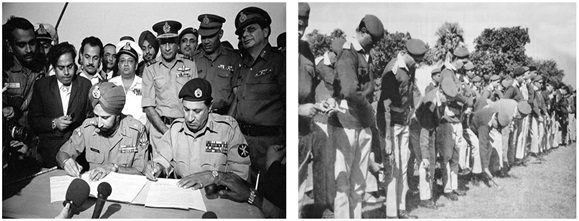
India Pakistan Kargil War 1999 Over Kashmir
Pakistan once again started war with India at small border town Kargil situated in Jammu and Kashmir state in India . In this war , Pakistan again attempted to capture Indian territory in Kargil distract in Kashmir area .
The war started when Pakistani soldiers crossed the LOC ( Line Of Control ) disguised as militants and captured Indian army posts left vacant by Indian army. India responded with Indian Army and air force launching a massice counterattack .
In Kargil war 1999 , India defeated Pakistan and evicted the Pakistani soldiers intruded into Indian territory after intense battle fought for two months on the most difficult hilly terrain of Kargil.
Kargil War : How India Defeated Pakistan In Kargil War 1999
Pakistani Proxy War against India Over Kashmir
After losing four wars with India and unable to match India in military might, Pakistan continued to wedge a low-cost proxy war against India by sending armed terrorists in Kashmir and also in other parts of India.
These terrorists have carried out a number of terrorist attacks across India and targeted innocent citizens . Pakistan is openly organizing terrorist camps in POK ( Pakistan Occupied Kashmir ) and these camps are breeding large number terrorists ready to launch .
Pakistan government and the Pakistani intelligence agency ISI is actively providing arms, money and training support to these radicalized terrorists. Pakistan now ranks first in most dangerous places in the world. As a result, Pakistani economy has collapsed and Pakistan is heading for a major economic crises with the collapse of its economy.
The Pakistan’s obsession for Kashmir and The military rule in Pakistan , disguised as democracy has led to the collapse of Pakistan’s economy and Pakistan today , is on the verge of bankruptcy .
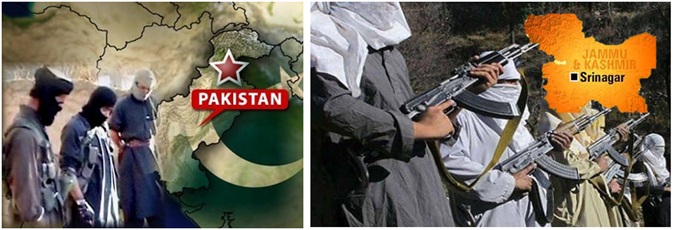
Development In Indian Kashmir
The Indian controlled Kashmir is today , one the most developed area of Kashmir at par with the rest of India , whereas the Pakistan controlled Kashmir has not seen any development .
The Indian government has started number of mega infrastructure projects in Kashmir to provide equal opportunities to the people of Kashmir.
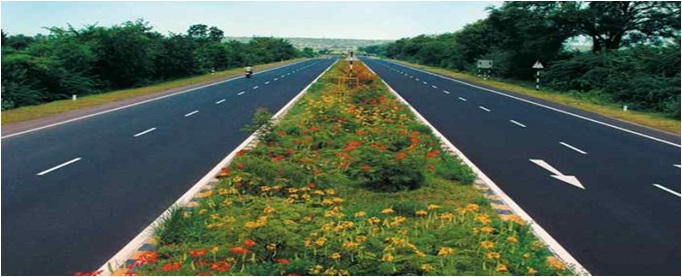
Exodus Of Native Hindu Kashmiri Pandits
The Pakistani intelligence agency ISI specifically targeted and killed thousands of Non-Muslim community especially local Kashmiri local Hindu Pandit community with the help of local militants and terrorists active in the Indian Kashmir.
The militants have killed many non-Muslim minorities and forced them to flee from Kashmir leaving behind their properties. This has resulted in a mass exodus of minority community from Kashmir and this figure is estimated to be over 800000 people. The Pakistani ISI has succeeded in carrying out systematic ethnic cleansing of other non-Muslims from Kashmir.
The Kashmiri Pandits are now staying as refugees in their own country. Successive governments in India have completely ignored and failed to protest the interest of these local Kashmiri Pandits.

What is the current Status in Kashmir 2019
The BJP government led by Prime Minister Narendra Modi came to power in 2014 with massive mandate . The Modi government has initiated number of measures to control the militancy in Kashmir .
However , Pakistan and Pakistani intelligence agency ICI is still very much active in Kashmir . The Pakistani ISI in connivance with local Muslim Kashmiri Politians is actively engaged in promoting militancy in Kashmir .
History Of Islamization of India
History Of Kashmir By Dr Syed Rizwan Ahmed
Conclusion
Historically Kashmir had always been part of India. The geopolitical and the demographic landscape of Kashmir changed due to Muslim invasion of Kashmir first by Mughals and then by Afghan Muslim Invaders. Due to these external invasions, the Hindu rule and Hindu population gradually diminished from Kashmir.
After independence in 1947 onwards, Pakistani government through its intelligence agency ISI has systematically carried out the ethnic cleansing of native Hindu Kashmiri Pandits and other Minority population by targetting them using terrorist groups originated from Pakistan. As a result, over 700000 Kashmiri Hindu pandits were forced to flee Kashmir and became refugee in their own country.
After the end of British rule over India , Kashmir was acceded to India in 1947 as per the wishes of its people and the Maharaja of Kashmir Hari Singh . Kashmir now is an integral part India and the status of Kashmir is non-negotiable.
The Kashmiri people are fade-up of violence, militancy and the presence of a large number of security personnel on the streets of Kashmir. The Pakistan sponsored militancy and insurgency has adversely affected the economy of the state .
Pakistan has emerged as the epicentre of terrorism in the world and the Chinese government is using Pakistan as a proxy to contain India and its economic progress. The Chinese government is providing arms, financial assistance to Pakistan and cover to the international terrorist at the cost of huge loss to its own credibility.
The people of Kashmir want peace , prosperity and development . As of now , we can only hope that peace and prosperity in Kashmir would soon prevail in this paradise on earth.
Do Let me know what is the solution for Kashmir issue .
